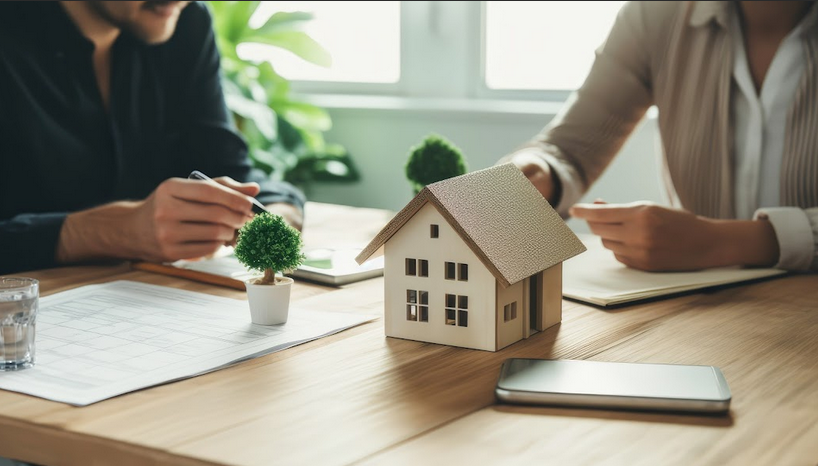A positive landlord-tenant relationship benefits both parties. For tenants, it means having a landlord who responds quickly to maintenance requests and treats you with respect. For landlords, happy tenants stay longer, take better care of the property, and pay rent on time.
While interpersonal conflicts can arise, maintaining open communication and being reasonable can go a long way toward building a mutually beneficial relationship. Fortunately, this guide provides tips for landlords and renters on fostering goodwill.
1. Be Aware Of Each Other’s Perspectives
The foundation of any strong relationship is understanding. Landlords, for instance, can benefit from hiring an experienced tenant lawyer in San Francisco or other regions, depending on their location, to gain a deeper insight into tenant rights and laws. This knowledge equips them to manage their property within legal frameworks and helps them better understand and respect the tenant’s need for a safe and comfortable living space.
In turn, tenants look for security, prompt responses to maintenance issues, and respect for their privacy. Understanding these needs can help landlords provide better service.
Conversely, tenants should appreciate the landlord’s investment and interest in maintaining the property. They should recognize that a well-kept property benefits everyone and that the landlord’s efforts often go beyond mere financial gain.
Acknowledging these perspectives builds respect, a critical element in any professional relationship. This mutual respect lays the groundwork for a positive, long-lasting relationship.

2. Understand Lease Agreements
A clear, comprehensive lease agreement is essential in framing the landlord-tenant relationship. This document should outline the tenant’s rights and responsibilities, rules, and expectations to ensure both parties are on the same page. It’s crucial for both landlords and tenants to understand and agree to these terms to avoid future misunderstandings. Here are some key aspects to focus on:
- Clarity On Payment Terms: The lease should detail when rent is due, acceptable payment methods, and any late fees. Understanding these terms helps prevent financial disputes.
- Rules And Regulations: Whether it’s about pets, noise levels, or alterations to the property, the lease should clearly state what is and isn’t allowed. This clarity helps avoid conflicts over property use.
- Maintenance Responsibilities: The lease should specify who is responsible for various types of maintenance and repairs. Doing so ensures both parties know their roles in keeping the property in good condition.
- Lease Renewal And Termination Procedures: Knowing the process for renewing or terminating the lease, including notice periods and any penalties, is vital for planning future living arrangements.
Regular reviews of the lease can also help keep both parties informed and aligned, especially if any amendments or updates are made. Understanding these elements of the lease agreement fosters a transparent and respectful landlord-tenant relationship.
3. Effective Communication
Effective communication is the cornerstone of any successful landlord-tenant relationship. Here’s how to ensure communication remains top-notch:
- Use Clear, Concise Language: Avoid technical terms and jargon. Keep messages simple and straightforward to avoid misunderstandings. Whether it’s a written lease agreement or a casual conversation, clarity is key.
- Embrace Technology: Utilize email, messaging apps, and online portals for efficient and documented communication. These tools not only save time but also provide a record of interactions.
- Set Expectations Early: Establish clear guidelines about how and when communication should take place. It includes setting reasonable hours for phone calls and outlining preferred methods of communication for different types of inquiries or issues.
- Listen Actively: Pay attention to tenant feedback and concerns. Active listening shows that you value their input and are committed to resolving issues.
Remember, exceptional tenant communication is not just about talking; it’s about connecting and understanding each other’s needs and concerns. This forms the basis of a strong, enduring landlord-tenant relationship.
4. Respect Privacy And Boundaries
Respect is a two-way street. Landlords must honor their tenants’ privacy, adhering to laws regarding property access. Similarly, tenants should respect the property and notify the landlord about any guests or changes in living arrangements. Mutual respect for privacy and boundaries prevents misunderstandings and builds a foundation of trust.
5. Maintenance And Repairs
Keeping the property in top condition is beneficial for both parties. Landlords should address repair requests promptly and perform regular maintenance. Tenants, in turn, should report issues as soon as they arise and treat the property with care. This collaborative approach to property maintenance ensures a pleasant living environment and preserves the property’s value.
6. Handle Disputes With Diplomacy
Disagreements are inevitable, but they don’t have to escalate. Approach conflicts with an open mind and a willingness to find a solution that works for both parties. Sometimes, involving a neutral third party can help resolve issues more amicably.
7. Regular Updates And Check-Ins
Regular communication isn’t just for resolving issues. Check-ins can be a great way to maintain a positive relationship. This proactive approach involves more than just addressing problems; it’s about staying connected and informed. Here are a few ways to implement this effectively:
- Scheduled Property Visits: Arrange for periodic visits to the property, ensuring they are convenient for the tenant and in compliance with local laws and regulations. It’s crucial to respect tenant privacy and provide proper notice before any visits, as required by law. These visits can serve as an opportunity to inspect the property’s condition and discuss any upcoming maintenance or changes.
- Feedback Opportunities: Encourage tenants to share their feedback. Whether it’s a suggestion for property improvements or expressing satisfaction, this open line of communication can make tenants feel valued and heard.
Through these regular updates and check-ins, landlords and tenants can build a stronger, more responsive relationship. This ongoing dialogue helps in preemptively addressing potential issues and fostering a sense of community and cooperation.
8. Build A Community Spirit
Fostering a sense of community is beneficial and transformative for both landlords and tenants. It creates an environment where everyone feels connected and supported. Here are a few ways to nurture this spirit:
- Organize Social Events: Hosting gatherings such as potlucks, BBQs, or holiday parties can be a great way to foster interaction and friendship among residents. It’s important to emphasize that participation in these events is completely voluntary. Ensure all tenants feel comfortable and understand there is no obligation to join. These events should be seen as an opportunity, not a requirement, and should aim to create an inviting space where neighbors who choose to participate can meet and bond.
- Create Common Areas For Interaction: If the property has shared spaces like gardens, lounges, or rooftops, encourage their use for casual meetups or organized events. It can be a place where tenants and landlords can interact informally, strengthening community ties.
- Encourage A Culture Of Helping And Sharing: Promote an environment where neighbors help each other out. Whether it’s lending tools, helping with groceries, or offering pet-sitting services, small acts of kindness can foster a strong sense of community.
Adding these elements to the landlord-tenant relationship may help enhance the living experience and create a network of support and camaraderie. This community spirit can significantly improve the quality of life for all residents, making the property more than just a place to live, but a true home.
9. Balancing Flexibility With Legal Obligations In Unforeseen Circumstances
Life is unpredictable, and both tenants and landlords may encounter unforeseen challenges. Tenants might face situations like job loss or health issues, while landlords might need to undertake unexpected property upgrades. In these scenarios, it’s important to balance empathy and flexibility with the legal obligations outlined in the lease agreement.
While understanding and accommodating each other’s circumstances is beneficial, both parties should remain conscious of their contractual commitments to prevent potential legal complications. Open communication and, if necessary, seeking legal advice or mediation can help in finding mutually agreeable solutions within the framework of the law.
10. Embrace Cultural Sensitivity And Diversity
Landlords and tenants often come from various cultural backgrounds in today’s increasingly multicultural society. Embracing cultural sensitivity is crucial in fostering a respectful and harmonious landlord-tenant relationship. Here are some ways to achieve this:
- Educate Yourself About Different Cultures: Landlords can benefit from learning about the cultures and traditions of their tenants. This knowledge can foster understanding and prevent misunderstandings that may arise from cultural differences.
- Respect Cultural Practices: Be mindful and respectful of tenants’ cultural practices, such as dietary restrictions, religious observances, or holiday celebrations. This respect can enhance the relationship and create a more inclusive environment.
- Communication And Language Considerations: When working with tenants for whom English is not a first language, it might be helpful to provide key documents or communications in multiple languages or ensure they are clear and easily understandable.
- Inclusive And Law-Abiding Policies: Ensure that property rules and community guidelines are both inclusive and in strict compliance with anti-discrimination laws. Be open to feedback from tenants on making the living environment more inclusive, but also be aware of the legal boundaries within which such adjustments can be made.
By maintaining this balance between cultural sensitivity and legal compliance, landlords can create a welcoming and inclusive environment while upholding their legal responsibilities.
Conclusion
Creating and maintaining a positive landlord-tenant relationship is an ongoing process. It requires effort, understanding, and respect from both parties. Following these guidelines allows landlords and tenants to enjoy a harmonious and productive partnership. Remember, a good relationship can make daily interactions pleasant and contribute to the long-term success of your rental experience.
Related Posts












